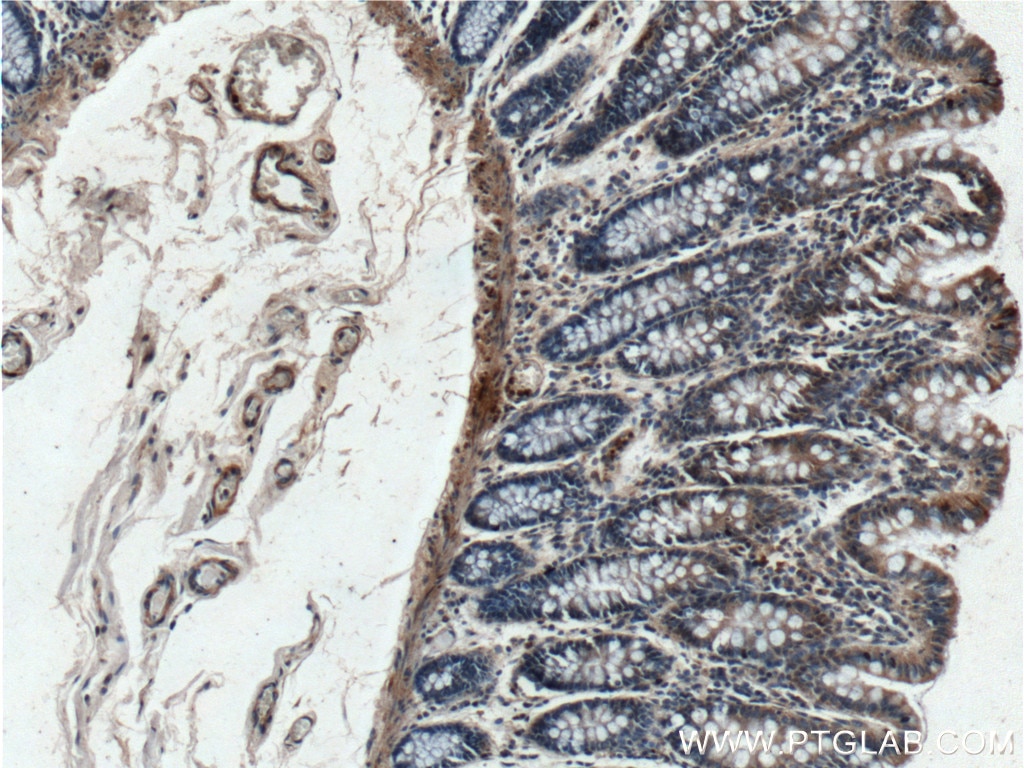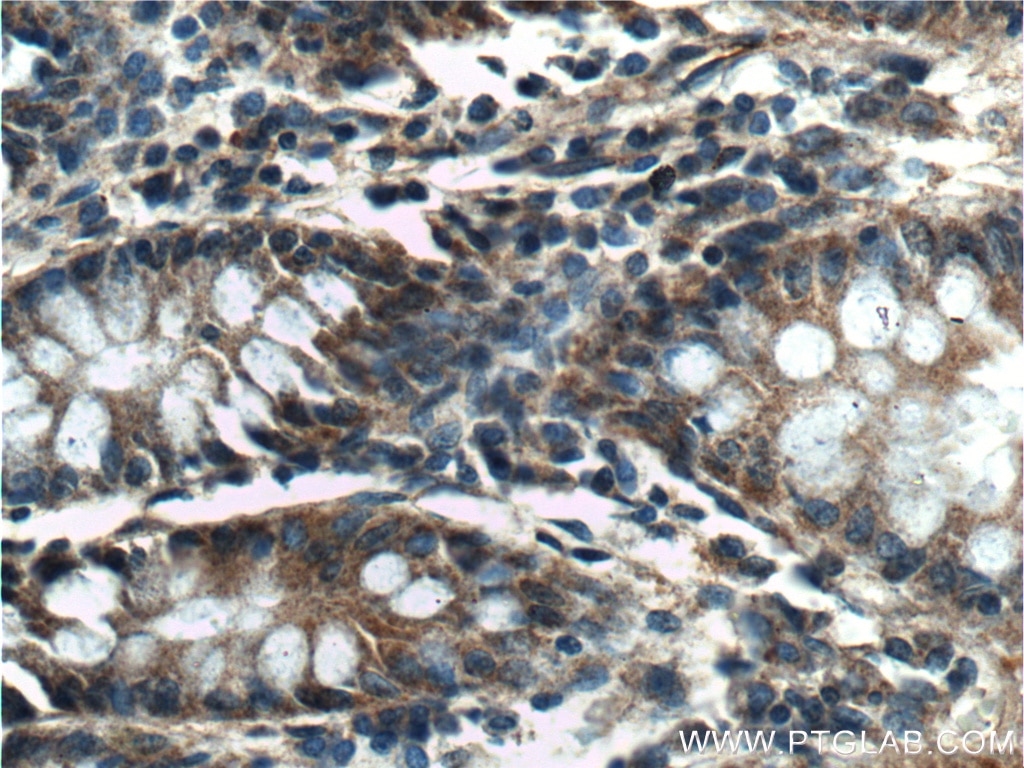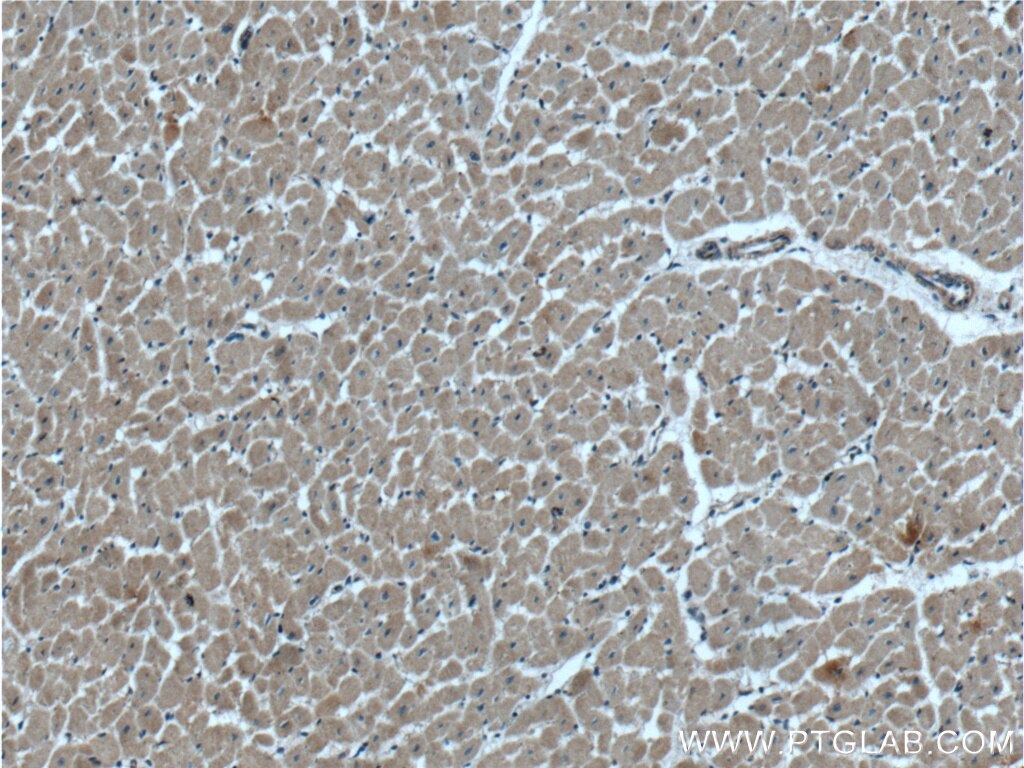Anticorps Polyclonal de lapin anti-TNFSF11/RANKL
TNFSF11/RANKL Polyclonal Antibody for WB, IHC, ELISA
Hôte / Isotype
Lapin / IgG
Réactivité testée
Humain et plus (2)
Applications
WB, IHC, IF, ELISA
Conjugaison
Non conjugué
N° de cat : 23408-1-AP
Synonymes
Galerie de données de validation
Applications testées
| Résultats positifs en WB | cellules Raji, |
| Résultats positifs en IHC | tissu de cancer de l'estomac humain, tissu cardiaque humain, tissu de côlon humain il est suggéré de démasquer l'antigène avec un tampon de TE buffer pH 9.0; (*) À défaut, 'le démasquage de l'antigène peut être 'effectué avec un tampon citrate pH 6,0. |
Dilution recommandée
| Application | Dilution |
|---|---|
| Western Blot (WB) | WB : 1:500-1:1000 |
| Immunohistochimie (IHC) | IHC : 1:50-1:500 |
| It is recommended that this reagent should be titrated in each testing system to obtain optimal results. | |
| Sample-dependent, check data in validation data gallery | |
Applications publiées
| WB | See 48 publications below |
| IHC | See 25 publications below |
| IF | See 10 publications below |
Informations sur le produit
23408-1-AP cible TNFSF11/RANKL dans les applications de WB, IHC, IF, ELISA et montre une réactivité avec des échantillons Humain
| Réactivité | Humain |
| Réactivité citée | rat, Humain, souris |
| Hôte / Isotype | Lapin / IgG |
| Clonalité | Polyclonal |
| Type | Anticorps |
| Immunogène | TNFSF11/RANKL Protéine recombinante Ag19975 |
| Nom complet | tumor necrosis factor (ligand) superfamily, member 11 |
| Masse moléculaire calculée | 317 aa, 35 kDa |
| Poids moléculaire observé | 20-30 kDa |
| Numéro d’acquisition GenBank | BC074890 |
| Symbole du gène | RANKL |
| Identification du gène (NCBI) | 8600 |
| Conjugaison | Non conjugué |
| Forme | Liquide |
| Méthode de purification | Purification par affinité contre l'antigène |
| Tampon de stockage | PBS with 0.02% sodium azide and 50% glycerol |
| Conditions de stockage | Stocker à -20°C. Stable pendant un an après l'expédition. L'aliquotage n'est pas nécessaire pour le stockage à -20oC Les 20ul contiennent 0,1% de BSA. |
Informations générales
TNFSF11 also known as RANKL, is a member of the tumor necrosis factor (TNF) cytokine family which is a ligand for osteoprotegerin and functions as a key factor for osteoclast differentiation and activation. RANKL is a polypeptide of 217 amino acids that exerts its biological activity both in a transmembrane form of about 40-45 kDa and in soluble one of 31 kDa (PMID: 15308315). The membrane-bound RANKL (mRANKL) is cleaved into a sRANKL by the metalloprotease-disintegrin TNF-alpha convertase (TACE) or a related metalloprotease (MP). RANKL induces osteoclast formation through its receptor, RANK, which transduces signals by recruiting adaptor molecules, such as the TNF receptor-associated factor (TRAF) family of proteins. RANKL was shown to be a dentritic cell survival factor and is involved in the regulation of T cell-dependent immune response. T cell activation was reported to induce expression of this gene and lead to an increase of osteoclastogenesis and bone loss. RANKL was shown to activate antiapoptotic kinase AKT/PKB through a signaling complex involving SRC kinase and tumor necrosis factor receptor-associated factor (TRAF) 6, which indicated this protein may have a role in the regulation of cell apoptosis.
Protocole
| Product Specific Protocols | |
|---|---|
| WB protocol for TNFSF11/RANKL antibody 23408-1-AP | Download protocol |
| IHC protocol for TNFSF11/RANKL antibody 23408-1-AP | Download protocol |
| Standard Protocols | |
|---|---|
| Click here to view our Standard Protocols |
Publications
| Species | Application | Title |
|---|---|---|
J Extracell Vesicles Exosomes derived from osteogenic tumor activate osteoclast differentiation and concurrently inhibit osteogenesis by transferring COL1A1-targeting miRNA-92a-1-5p. | ||
Aging Cell Pyrroloquinoline quinone alleviates natural aging-related osteoporosis via a novel MCM3-Keap1-Nrf2 axis-mediated stress response and Fbn1 upregulation | ||
J Control Release Sialic acid-modified chitosan oligosaccharide-based biphasic calcium phosphate promote synergetic bone formation in rheumatoid arthritis therapy. | ||
Antioxid Redox Signal Titanium Particles Activate Osteocytic Connexin 43 to Induce Oxidative Stress and Osteoclastogenesis Through the JAK-STAT Pathway | ||
Aging (Albany NY) Increased expression of osteopontin in subchondral bone promotes bone turnover and remodeling, and accelerates the progression of OA in a mouse model. |







